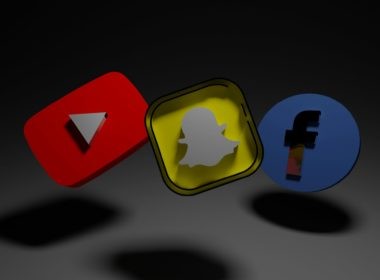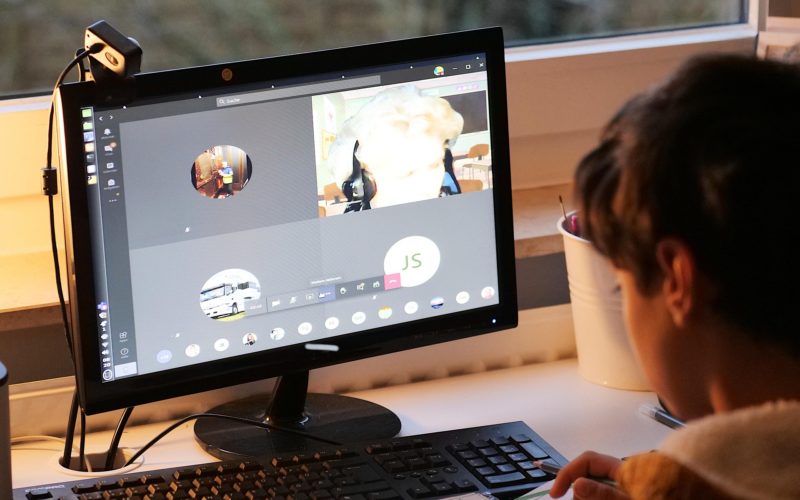Video chat is popular with everyone, from brands to couples and friends across distances. One reason for its popularity is that, unlike texting, video chat is more personal as it mimics face-to-face interactions. In fact, over 3.3 billion people worldwide used video chat platforms in 2024, reflecting its massive adoption. Below, we explore why video chat is a popular choice for brands and individuals.
What Makes Video Chat the Next Big Thing in Online Communication?
The move from texting to video chats was gradual, influenced by the following:
Real-Time Interaction
The key factor ensuring video chat surpasses past trends is real-time interaction. Voice calls also enable immediate responses, unlike text or email, but video chats have the added advantage of seeing the person you’re interacting with. Additionally, some platforms allow random conversations with strangers, helping you widen your online network.
For instance, you can video chat strangers on a platform like Emerald Chat, and as explained on the Emerald Chat blog, the advanced algorithm helps pair you with people with similar interests to make the random chat spontaneous but meaningful.
A Hunger for Authentic and Trustworthy Communication Platforms
You’ll agree that video chat is more authentic than texting. For instance, it allows you to analyze facial expressions when a conversation makes someone uncomfortable, offering extra insights to better understand them. It’s even better than a voice call because if the tone varies, you can also see body language shift. Studies show that 89% of users feel more connected through video calls compared to other methods, enhancing trust.
As such, video chats can also help businesses conducting online interviews evaluate the candidates better. This method can also make customer support calls more authentic as you can see the person serving you, especially now that more companies are using AI-generated support systems.
High Engagement
One advantage is that video chat provides a two-way communication channel to keep your audience active. It’s not the same as sharing pre-recorded content and is particularly beneficial for live Q&A sessions, collaborative discussions, and interactive events with brands and influencers.
Social Media
Beyond improving engagement, video chat secures a front-row seat on social media as platforms prioritize video over other content formats. You may have noticed that even Google now features a tab for short videos alongside the traditional video tab.
Thus, integrating video chat into your social media strategy can boost visibility, as algorithms favor engaging content to retain users. This prioritization also creates opportunities for influencer gigs to generate extra income through monetization.
Technological Growth
So much technological growth has enabled the shift from text to video communication. For example, now, we have smartphones with front-facing cameras. You can video chat with someone at home or even on the go. Such flexibility allows you to make the experience as comfortable and interactive as possible. Further, smartphones are becoming more affordable, allowing more people to access video chat features.
Beyond smartphones, the ease of getting a personal computer also makes formal video chats possible. Unlike the old desktops that required an external webcam, laptops have an almost invisible internal webcam with better video quality.
On top of that, cross-platform compatibility allows you to switch from a smartphone to a computer or other device without losing the connection, so you can continue the conversation as you move from home to work settings and vice versa. Another change that has enhanced video interactions is access to high-speed internet in more regions globally.
On top of that, technology is enhancing the quality of video chats with every new invention, eliminating issues like noise and blurry video. You can also change the background on some video chat platforms.
Remote Work and Virtual Events
As more brands and individuals adopt remote work, the demand for better video chat platforms grows. This trend is driving improved features and more platforms to address needs like language diversity and visual impairment.
Video chat can also lower company overhead by hosting workshops and training online instead of sending staff across branches. This wave of virtual activities influences social gatherings too, with brands hosting events like fitness classes and club meetings — offering more ways for online users, even introverts, to interact without disrupting their schedules.
E-learning Integration
Education is also changing because of the disruptive force of video chats. As such, e-learning platforms have enhanced discussion platforms where learners can interact with facilitators in real-time. It allows for live demonstrations, tutoring, and feedback between instructors and learners.
Telemedicine Growth
Another reason for video chat’s growing popularity is its role in healthcare through telemedicine. Healthcare workers can offer video consultations, allowing people with mobility issues or those far from facilities to receive professional assistance. Interactive features also enable patients to share documents and files in real-time, aiding accurate diagnoses.
Gaming
Gaming platforms are enhancing interactions through video chat. It makes multiplayer games enjoyable, unlike when text and voice chats were the only options. Now, teammates can celebrate better and also read non-verbal cues like gestures to enhance their coordination.
Conclusion
There was a time when sending letters was the most advanced communication method. Then came the age of sending SMS and making voice calls. Now, more people have smartphones, so connecting to the internet is inevitable.
On top of that, the interactions have changed as friends and family relocate to explore better opportunities. Keeping up with these relationships requires advanced communication methods, not texting and voice calls, and video chats are a suitable alternative. They also work for formal events and meetings, when accessing telehealth services, and when you need to contact customer service.












